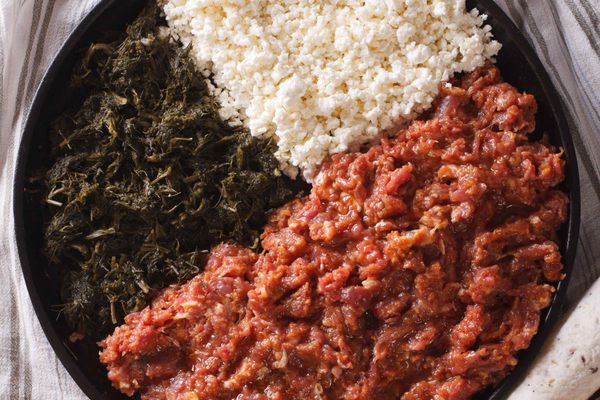The “golden blue” as locals call it, is a prized plum in Stromberg, a small town (population: less than 5,000) known for its Gothic churches and sloping meadows resplendent with plum trees, their white flowers quivering gently in the wind. It is so prized, in fact, that the European Union granted it Protected Designation of Origin status in 2013, meaning that the plum cannot be grown anywhere outside of this verdant and historic town in the Westphalian Lowlands and still be called a Stromberg plum.
The plum came to Stromberg with Ludwig Niedieck, a local merchant who imported some trees from the south of France in 1790, kickstarting what is now a centuries-old pomological tradition in the region. Around 20,000 plum trees grow in Stromberg today, providing enough fruit for a cottage industry that includes baked goods, preserves, and the famed Stromberger Pflaumenbrand, a plum liqueur made at the local distillery, Brennerei Druffel. Once harvest time comes around in September, the ripe, purple plums are gently shaken from the trees using machinery designed specifically for the purpose.
Locals love the juicy, slightly acidic plum for its sweetness (it has a high sugar content) and celebrate it every year at the annual Stromberger Plum market (Stromberger Pflaumenmarkt) in September, which brings 15,000 visitors into town. Baskets overflow with the bluish-purple fruit at market stalls, leaving partakers with sticky hands and sated bellies. Jams, plum tortes, and other plum-centric baked delights are coveted items of sale. There’s plum ice cream and even plum sausage. A Plum Queen is crowned every year, and will be the chosen representative tasked with introducing and venerating the fruit at markets and trade fairs in the region.
Where to Try It
-
Nordrhein Westfalen Culinary Tours Website
Völklinger Str. 4 , Düsseldorf, 40219, GermanyPlum enthusiasts might consider an amble down the Pflaumenwanderweg, a six-mile hiking trail through the plum trees, with designated stops for plum history, an introduction to cultivation methods, and tastings.
Written By
 Rohini Chaki
Rohini Chaki













